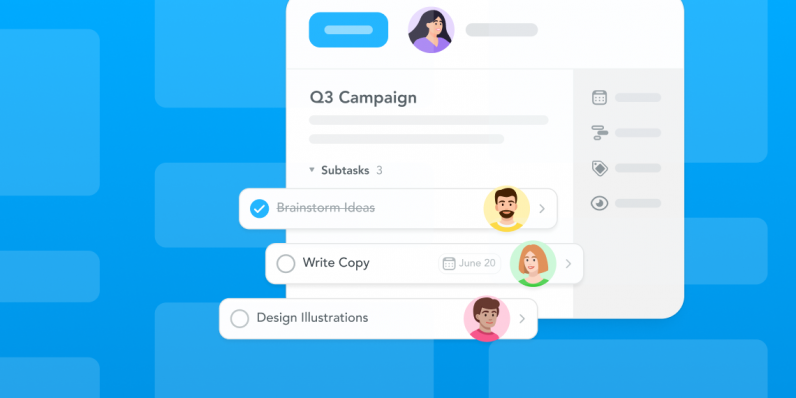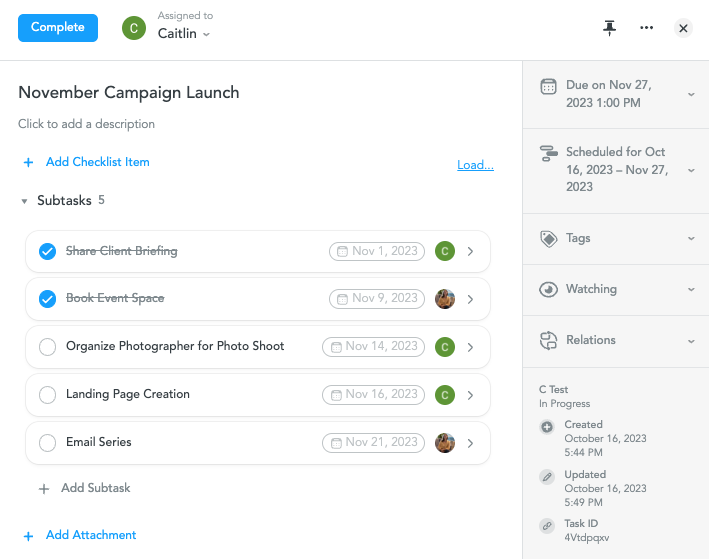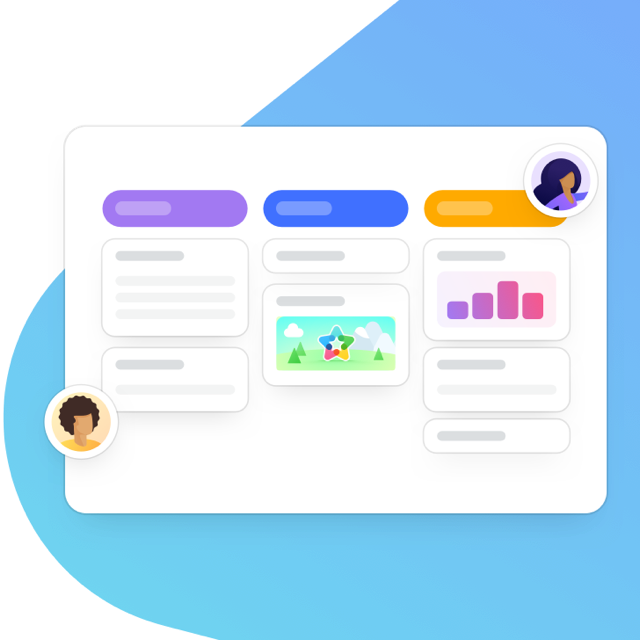You know what you want to do – but how are you going to get there? The only way to figure it out is to plan, plan, plan! If you want to make good decisions that lead to great results, understanding the resources you have, defining how you’re going to use them, and considering your limitations is key. It’s time to lay it all out. Dive into the topic of project resource planning to get all your ducks in a row.

- What Is Project Resource Planning?
- Why Is Project Resource Planning Important?
- What Is a Resource Management Plan?
- What Should Your Resource Management Plan Include?
- Do You Really Need Resource Management Software?
- Common Pitfalls in Resource Planning – And How to Avoid Them.
What Is Project Resource Planning?
Project resource planning is vital to project success – yet less than 40% of project teams invest in resource planning and management. Good planning ensures that the right resources are available at the right time for smooth, successful project execution. Think of it as orchestrating a symphony – but instead of instruments, you’re harmonizing people, materials and tools. Your project will hit the right notes only when every element works in sync.
At its core, resource planning in project management includes:
- Identifying Needs: Figuring out what you require and in what amounts.
- Taking Stock: Understanding the resources you have.
- Scheduling Time: Deciding when to use what.
- Defining Roles: Clarity on who’s responsible for which task.
- Budgeting: Allocating costs effectively.
- Staying on Track: Adjusting as needed to keep things running smoothly.
Why Is Project Resource Planning Important?

Resource planning affects every stage of a project, and it doesn’t end there. The way you plan your resources now can impact concurrent or future projects, other business areas, and the company’s overall profitability. For example, if you fail to account for costs and your project goes wildly over budget, your ROI will be lower than expected. Budget may need to be pulled from a different project, leaving you with fewer resources next time. This can negatively impact project efficacy, leading to missed targets and unmet company goals.
Now, let’s take a step back and consider the benefits within the context of the project. As a project manager, an accurate and thorough plan helps you to:
- Maximize efficiency
- Reduce waste, and
- Ensure workflows run smoothly.
It also helps your team members to:
- Understand their role in the project, and
- Collaborate effectively towards shared goals and objectives.
Project resource planning provides the clarity and direction your team needs to execute the project well and achieve the desired results, while staying on time and within budget. Of course, the work isn’t over once your project is up and running. Project resource planning means monitoring, refining and adjusting the plan until the project ends.
What Is a Resource Management Plan?

A resource management plan is one part of your overall project plan. It’s where you outline the details of what you need for your project, what it costs, and who will provide it. It’s also where you’ll define a project timeline, along with how you will keep resources in check throughout the project lifecycle. When the scope and requirements are documented and transparent, it’s much easier to:
- Evaluate your resources.
- Get approval on resource allocation from company leaders.
- Align with stakeholders and identify any potential issues.
- Keep track of changes e.g. budget cuts, team restructuring.
- Keep your team informed and aligned throughout the project.
What Should Your Resource Management Plan Include?

The following three categories include the key elements you should consider when creating an effective resource management plan:
1. Resource Identification and Allocation
- Required Resources: The resources you need for a successful project. Resources can include people (e.g. team members, stakeholders), equipment and tools, materials and supplies, and budget.
- Resource Estimation: The quantity of resources you need for a successful project. For example, how many hours will a developer work on a particular task? How many units of a material will be required? You can also note any resource constraints here.
- Roles and Responsibilities: Who is doing what in the project. A RACI matrix will help you define this. Embed your matrix into your project resource management plan for a quick visual overview.
2. Scheduling and Budgeting
- Resource Calendar: An overview of what resources are available, when. This is particularly helpful when resources aren’t available full-time or are shared across projects. Block out time in a shared calendar or use a Gantt chart to track this.
- Cost Breakdown: The cost associated with each resource. Breaking down costs helps you to allocate your budget strategically, make accurate forecasts, and cut back on planned activities which don’t make sense financially.
- Acquisition Strategies: How to acquire resources. For example, if you need a specific expert, will you hire a new employee, use a contractor, or train up a team member?
- Training and Development: How you’ll bring the right skills and knowledge into the team. This could include learning a new software or acquiring a certification.
3. Analysis and Control
- Backup Plans: A plan for how you will deal with potential challenges or bottlenecks so your project doesn’t stall if a resource becomes unavailable.
- Communication Processes: Guidelines on how updates related to resources should be communicated to stakeholders. These will reduce misunderstandings and confusion during your project.
- Monitoring and Control Measures: The processes or tools which will be used to track and manage resources throughout the project. The approach you take will depend on your project KPIs.
Find out more about setting and achieving goals as a team – and what to do if your goals still seem out of reach.
Do You Really Need Resource Management Software?

Trying to oversee your project resources without digital tools can lead to significant resource planning pitfalls. However, resource management software isn’t always the answer. The right tools for your team will depend on the scope of your projects. Only if you’re running multiple large and complex projects is optimized resource management software worth the investment. This software will typically work with big datasets to help you do things like match project needs with team members’ skill set, or test various resource allocation strategies to identify the best outcome.
If that sounds too in-depth for your team, a lightweight tool which helps you manage your project resources and execute your projects is a better option. A task management tool gives you the transparency and structure you need to stay agile by easily keeping on top of project developments. In contrast to a “hardcore” resource management tool, you don’t have to deal with unnecessary features adding additional complexity to your workflows.
To ensure planning and execution runs smoothly, look to project management software with documentation functionality – such as MeisterTask. With project documentation and project management seamlessly connected, you and your team always have a full, up-to-date overview of your resources at every stage of the project.
Need some help getting started with your resource management plan? Use the “Project Plan” template in MeisterTask and easily adapt it to your needs.
Common Pitfalls in Resource Planning – And How to Avoid Them.

Getting project resource planning right lies somewhere between art and science. Some things you simply can’t control, but steering clear of these common pitfalls will help make your project a success. Here’s what to avoid – and how.
1. A Lack of Visibility and Transparency

It can be hard to get an overview of your resources if you don’t know what your stakeholders are working on, or how much time your team has to take on new projects. This can lead to overestimating resources and inaccurate forecasts (not to mention a lot of stress for everyone involved).
Centralizing all of your projects in an accessible and collaborative task and project management tool makes it easier to maintain transparent workflows.
This helps you to:
- Get an overview of how resources are allocated across multiple projects.
- Keep track of who is doing what and when.
- View and manage your team’s workload, and
- Gain a clear understanding of priorities and deadlines so you can plan and adapt accordingly.
To do this, you need a task or project management tool. In MeisterTask, you can assign tasks to team members, set specific deadlines, and add links for context – e.g. to your resource planning notes. With project scope, deadlines and responsibilities clear, you have more control over your resource planning. Your team can also better organize their work and execute tasks to a high standard. Better planning and greater transparency empowers your team to work productively – and a productive team gives you more of one valuable resource: time!
2. Failing to Acknowledge Time Constraints

You want to squeeze as much value as possible from your resources, but it’s important to leave some wiggle room when planning your timeline. Expect the unexpected, such as colleagues going on sick leave or unforeseen urgent tasks. Overly-ambitious resource planning can lead to an overwhelmed and panicked team prone to mistakes. Fixing errors will add extra time to delivery, eat into your budget, and reduce the quality of output.
Of course, in order to be realistic with your time, you need to know how long things really take. One way to do this is with time tracking in MeisterTask. Use time tracking to find out how much time is spent on a task and compile the data to find an average time for completion. Then, schedule your tasks. With Timeline – MeisterTask’s Gantt chart view – you can easily see how tasks interact and overlap. For example, you might notice one week is jam-packed and the next is quiet. This helps you ensure resources are neither under-utilized or stretched to the extreme during any given time.

Nailed down how long each task takes? Create an overview note in MeisterTask to share with stakeholders and colleagues. Understanding the time required for a certain type of task will inform their own project resource planning. It will also help them to submit realistic and timely task requests to your project team.
3. Losing Control of Your Budget

Unexpected expenses not only strain your budget but can also cause delays and reductions in quality. This can have significant consequences, particularly in manufacturing and construction industries. Just think back to that Grand Designs episode, or the fiasco with Berlin’s Brandenburg airport. Starting with an accurate and detailed budget breakdown, which should be included in your resource management plan, will help keep a sticky financial situation at bay. However, overspending can be triggered by last-minute changes or unexpected external events. So what happens if you need to fix, rather than prevent, the problem?
- First, identify exactly where the budget has been overspent – and why.
- You can then create an action plan to reduce spending and make cuts where necessary.
- You might need to recoup budget from elsewhere, which means taking a holistic view of your resource plan and making adjustments.
- Importantly, you should be open about budget overrun with your stakeholders. Willingness to communicate issues as they happen builds trust. This is important to a successful working relationship – and the success of future projects. Doing so can also create the space to find a solution together and help you bring your budget back under control.
4. Poor Communication Around Requirements & Responsibilities

With so many moving parts, project tasks – especially small to-dos – can easily slip through the net. This is often due to poorly communicated requirements. The solution? Help everyone to see exactly what is expected, from who, and when. Use Subtasks in MeisterTask to break down large tasks into smaller, actionable steps, then assign them to individual team members and set specific deadlines for each subtask. In doing so, you provide an extra layer of clarity which improves accountability and reduces confusion in your team.
Subtasks also help your team understand how each step is connected to the overall task, and how this fits into the bigger picture of the project. As such, alignment is improved, which means better collaboration and smoother workflows.

With each subtask neatly nestled under the parent task, it’s easy to stay organized and maintain control at a granular level – without losing sight of the wider project context. This is key to assessing whether your resource plan is working in practice, and whether adjustments (even small ones) need to be made. For example, you can easily identify blockers and missed deadlines for task components before they impact the overall task delivery – and take action.
Task updates and notifications make it even easier to do this as you’re alerted to developments in real-time. Likewise, keeping task-related communication on the task ensures communication is transparent and important information doesn’t get lost in email chains or instant messages.
5. Missing Opportunities for Learning and Improvement

Missing valuable learnings can lead to you make the same planning errors across multiple projects. This is bad for business and terrible for team morale. A tool to evaluate the impact of your plan – i.e. assess project data – is essential for identifying opportunities to refine your approach. To ensure you’re moving in the right direction, you need:
- A Comprehensive Performance Overview: A transparent, at-a-glance view of performance metrics.
- Updated and Accessible Documentation: Up-to-date insights on project progress and learnings.
With MeisterTask Reports, you get an overview of missed deadlines and tasks awaiting assignment at a glance. You can instantly identify who has too much work – and who has capacity to take on more. This helps you to fairly redistribute workloads during the project and ensure no task is forgotten. Insights into the total hours dedicated to the project and specific tasks within it can inform future resource planning.

If you’re coming up against the same problems again and again, ask whether project learnings are clearly documented. Keep updates, findings and results in a shared note in MeisterTask – and encourage your team to do the same. This will ensure all stakeholders can understand and learn from the project. Centralizing this information also saves time that would be wasted communicating the same things across multiple platforms, and keeps stakeholders aligned throughout the project’s lifecycle. When what works (and what doesn’t) is clear, you’ll be able to develop a formula for success, keep team morale high, and achieve great results.
How We Do It: Meister’s Tips for Project Resource Planning.
Hopefully it’s no surprise that there’s power in knowledge – especially when it comes to resource planning in project management. With this in mind, we asked three Meister Lobsters to share their insights and tips. Put these pearls of wisdom into practice for a smoother, more effective planning process.

We are never short on great ideas, but almost never have enough resources to bring them all to life – especially when they involve multiple teams. Having a clear company strategy and defined goals makes this much easier. This allows the team to prioritize which projects are essential and which ones are ‘nice to have.’ It also provides the direction we need to align on how to allocate resources for the best possible outcomes and to get all project stakeholders on board.

My top project resource planning tip? Be brutally honest with your resource assessment. If you underestimate what you need for a project to be successful, your team will suffer for it later. My motto: “Under promise, over deliver”. A significant part of resource planning is negotiation, so ask for the things you need – and be prepared to explain why. Back up your requests with data wherever possible!

To understand the resources I have available, I refer to current and upcoming company initiatives. At Meister, these are documented and updated in MeisterTask for an easy overview. I can see which resources have been allocated where and if there’s room for reallocation if necessary. Keeping the lines of communication open with other department leads is also vital for effective resource planning. A personal touch can be helpful, especially when flexibility and creative thinking are required!
A (Resource) Plan for Success.

You’re ready to start your research and identify what will make the engine of your project run – congrats! One final note: preparation is key, but it’s what you learn along the way that will take your project over the finish line. By putting in the groundwork now, and by keeping watch for changes or opportunities to refine your plan, you’ll stay one step ahead and make your project a success.
FAQs
What’s the Difference Between Project Resource Planning and a Resource Management Plan?
Project resource planning is an overarching strategy that ensures the right resources are available at the right time for a project. It involves identifying needs, scheduling, budgeting, and more. A resource management plan, on the other hand, is a specific document within the overall project plan. It details the resources required, their costs, and the plan to manage them throughout the project lifecycle.
How Can Software Support Project Resource Planning?
Project or resource management tools provide a centralized platform for tracking tasks, deadlines, and resource allocation. For instance, MeisterTask includes features such as Reports, which help you to get an overview of missed deadlines and task allocation. Such tools promote transparency, better workload distribution, and offer insights into project hours, aiding in future planning.
How Can I Ensure Continuous Improvement in My Resource Planning?
Regularly evaluate your resource management plans to extract key data and insights. This allows you to understand the plan’s efficacy and make necessary adjustments. Utilizing tools that offer performance metrics and up-to-date project progress – such as MeisterTask – can help you stay on track.

